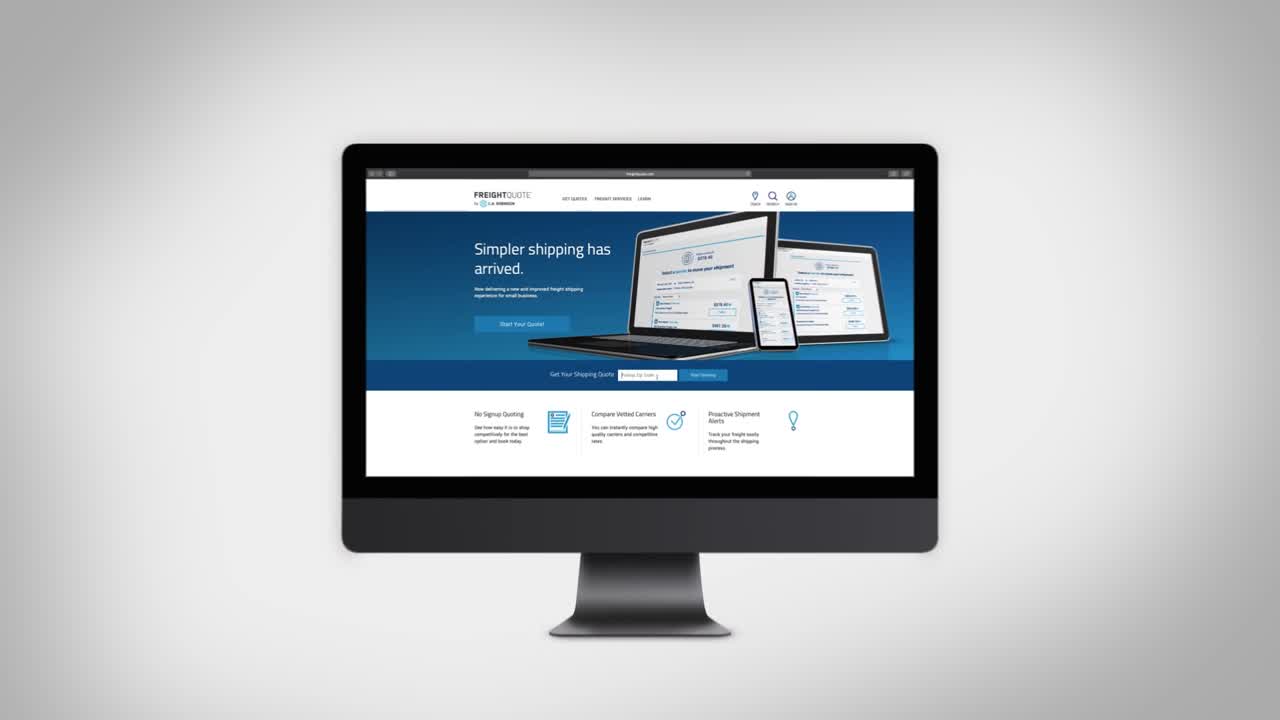How to ship machinery and heavy equipment
Finding the most effective way to ship your machinery can save you time and money at the end of the day. With the help of a freight service provider, like Freightquote®, you will receive expert advice about your shipment and access a vast network of reliable carriers.
Heavy equipment freight or machinery often includes items that require specialized carriers and equipment for transportation. To successfully ship machinery and machine parts, you must determine the right packaging, mode, and carrier.
What qualifies as equipment shipping?
Equipment shipping can encompass a wide range of items used in different industries. The qualification depends on the type of equipment being transported. Exactly what constitutes heavy equipment freight can vary depending on factors such as weight, size, and special handling requirements.
Common machinery and equipment freight shipped through Freightquote
- Milling machines
- HVAC equipment
- Medical machines
- Vending machines
- Fitness equipment
- Floor care machines
- Industrial sewing machines
- Commercial restaurant equipment
Don't see your exact type of machinery on this list? Reach out to our freight shipping experts to create a tailored shipping solution for your freight.
Guidelines for shipping equipment or machinery
- 1. Assess and prep: Understand the item you’re choosing to ship. Get accurate product dimensions, weight, and any other information that could impact freight capacity. Remember, machinery must be drained of all fluids, like oil and gas, to avoid hazmat fees and delays.
- 2. Package properly: Package machinery or equipment securely to protect it from shifting too much during transit. Use padding or custom crates if needed.
- 3. Gather documentation: Ensure you have the necessary shipping documents including the bills of lading provided to you at booking, and any customs paperwork
- 4. Choose the right shipping method: Weigh your options and consider full truckload (FTL), flatbed, or intermodal options as well. Some machinery and machinery parts are small enough in size and quantity to be shipped less than truckload (LTL), while others are much larger and will require a different service.
- 5. Choose the right carrier: Combine what you know about your machinery shipment with available carrier options. Our LTL carrier ratings are a helpful tool to gain insight into past carrier performance.
- 6. Plan for loading and delivery: Know what specialty equipment will be required to prepare your machinery for loading or delivery. Heavy equipment often requires lift gates or loading dock access in order to get it on the truck. Having this information can help avoid adjustments on your shipment.
Accuracy counts when shipping equipment
It can be difficult to accurately weigh uncommon items like heavy machinery. Use what you know about a similar item to anticipate your needs and restrictions. Use these creative tips to get an accurate weight without a freight scale.
Common questions when shipping machinery and parts
What freight shipping mode should I use to ship machinery?
The choice of which transportation service for shipping machinery or other heavy equipment depends on various factors, including the size, weight, distance, urgency, budget, and any specific requirements of the machinery being transported.
You can select “Compare all services” when quoting in our online tool to see both LTL and full truckload rates.
To learn more about the differences between LTL and full truckload services, or gain further industry knowledge check out our blog.
How do I determine the freight class of my machinery?
Determining the correct freight class for your machinery is important for accurate pricing and proper handling during shipping. Freight class is determined by four main factors:
- Density: Includes how much space your shipment takes up along with its weight. Use our freight class density calculator to calculate the density of your shipment.
- Stowability: Gives a higher freight class to items that are more difficult to store. This could be due to weight, shape, or hazardous materials.
- Handling: Assigns a higher freight class to shipments that require more handling.
- Liability: Assigns a higher freight class to shipments that are more likely to be damaged.
Rely on Freightquote to do the heavy lifting, use our online tool to calculate the freight class for you.
How do I evaluate the liability limits of my machinery?
Each and every shipment (both LTL and truckload) includes limited liability coverage. The amount of liability coverage is calculated by the carrier and is dependent on the commodity type. For LTL, it typically covers a designated dollar amount per pound of freight being shipped.
Assessing liability limits means understanding the potential risks associated with transporting your machinery and taking steps to mitigate those risks through shippers insurance or other means. As you’re shipping your new or used machinery or machinery parts, you will want to understand the carrier’s liability for freight loss and the limits within the liability coverage being offered.
How much will it cost to ship my machinery or heavy equipment?
Due to the vastness of the category, the cost to ship machinery or heavy equipment can vary widely. Each shipment is unique, so it's important to consider the factors that contribute to the overall shipping cost:
- Insurance
- Origin and destination
- Size and weight of cargo
- Loading/handling charges
- Specialty services: liftgate, inside pickup and delivery, limited access, etc.
By providing detailed information about your machinery, shipment requirements, and desired level of service in our online tool, you can obtain more accurate estimates for shipping costs.
What does it mean if my equipment is oversized cargo?
Your shipment is most likely classified as oversized if it’s too large for standard shipping dimensions. You should anticipate slightly higher costs due to the need for accommodations, special equipment, and extra handling.
Agriculture, construction, and energy equipment are often examples of oversized cargo.
Ready to ship machinery or equipment?
Freightquote by C.H. Robinson can help break down the basics of machinery shipping and connect you with the best fit heavy-haul carrier.
Compare quotes now


